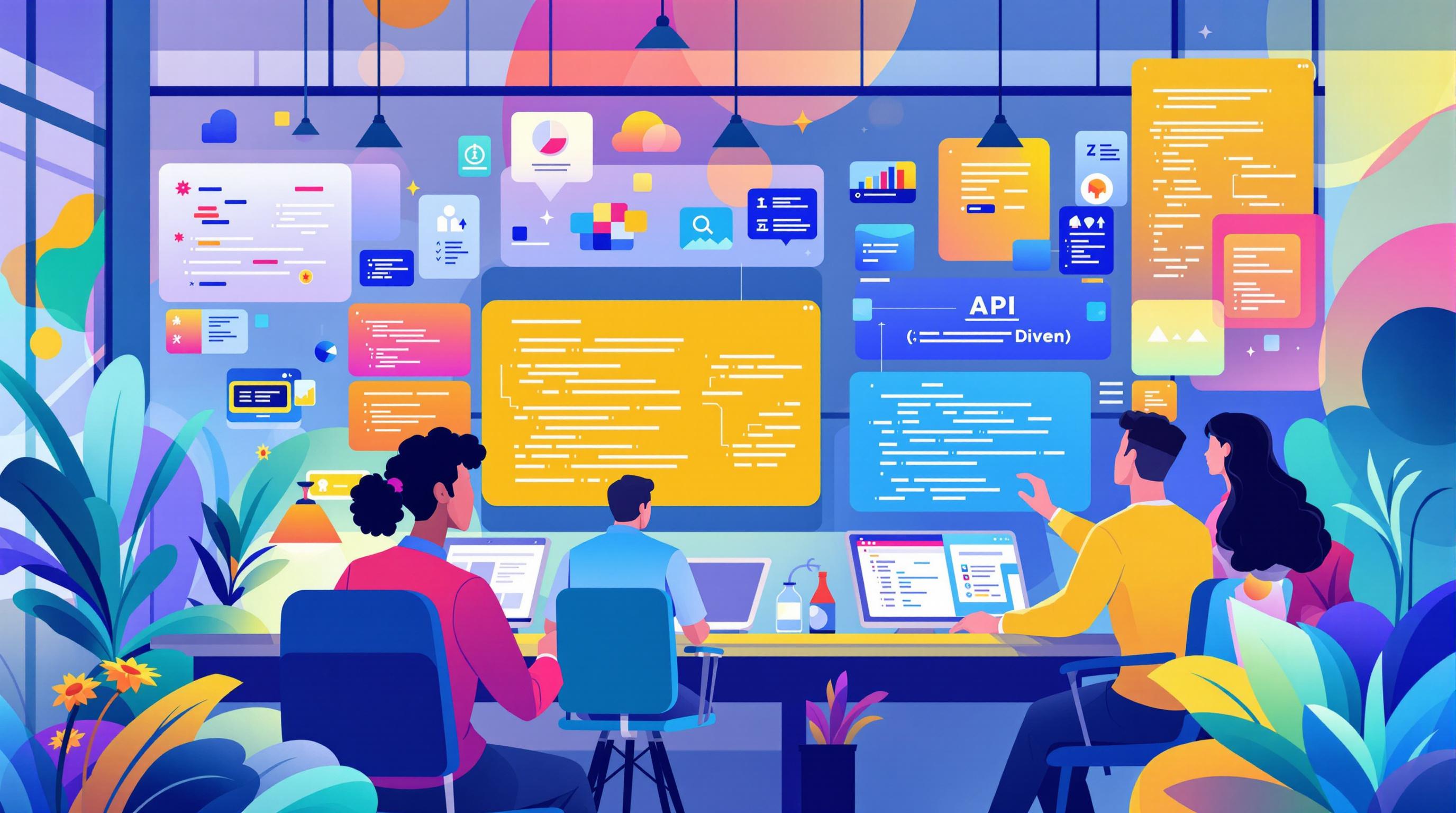Storytelling in SaaS API Documentation

Want to make your API documentation easier to understand and more engaging? Storytelling can help. By turning technical details into relatable narratives, you can simplify complex concepts and improve developer onboarding.
Here’s how storytelling transforms SaaS API documentation:
- Explains Purpose: Connect technical steps to business outcomes, showing how APIs solve real problems.
- Improves Learning: Example-based guides make it faster for developers to understand and implement APIs.
- Boosts Adoption: Clear, story-driven documentation reduces development time and encourages usage.
Quick Tips to Get Started:
- Use visuals like flow diagrams and code samples.
- Start with practical examples tailored to developers and stakeholders.
- Break down processes into simple, step-by-step instructions.
Storytelling makes API docs not only functional but also user-friendly. Let’s dive deeper into how to apply this approach.
How Stories Improve API Documentation
Make Developer Learning Faster
Endgrate simplifies the learning process for developers by weaving integration steps into relatable narrative scenarios. These example-driven walkthroughs showcase common patterns, making it easier for developers to understand and apply the information. Additionally, narrative arcs help bridge the communication gap between technical and nontechnical teams, ensuring everyone stays on the same page.
The Power of Storytelling When It Comes To APIs with ...
Storytelling Methods for API Docs
Turn detailed API information into easy-to-follow, visually engaging steps.
Use Visuals and Practical Examples
Adding visuals can make complex concepts easier to grasp. Combine tools like flow diagrams, code snippets, and real-world scenarios to explain API workflows:
- Flow Diagrams: Map out how data moves and systems interact.
- Code Samples: Provide clear examples of endpoint calls, data types, redirects, and transfers.
- Customer Scenarios: Share real-life integration stories, highlighting successes and challenges.
For instance, Endgrate's documentation simplifies processes with a three-step visual: selecting the data type, redirecting to the interface, and triggering the data transfer. Up next, explore how to align your narratives with your audience's goals.
sbb-itb-96038d7
Steps to Write Story-Based API Docs
Here’s how to transform API specs into engaging narratives in just three steps.
Align Stories with Your Audience
Focus on the needs of your readers and craft your stories accordingly:
- Developers: Provide code-focused walkthroughs that dive into technical details.
- Stakeholders: Highlight use cases that emphasize business benefits and outcomes.
Start with Practical Examples
Kick off each section by showing how the API works in a real-world scenario. These examples set the stage and make the content relatable.
Use Simple, Step-by-Step Instructions
Break down integration processes into clear, numbered steps. Stick to plain language and focus on one action per step to keep things straightforward and easy to follow.
Tips for API Documentation Stories
Keep Stories Updated
Regularly review and revise your documentation to include any changes like new features, integrations, endpoints, or retired methods. This keeps your content accurate and useful. Additionally, gather input from developers to identify and address any gaps they encounter during integrations.
Collect Developer Feedback
Use tools like surveys, issue trackers, and support channels to gather insights from developers. Their feedback can highlight challenges and help you improve your examples and explanations.
Conclusion
Storytelling in API documentation turns complex technical details into clear, engaging guides that help developers implement solutions more easily and successfully integrate your API. Focus on blending precise information with a narrative approach to walk developers through each step, while showcasing real-world use cases and benefits. Keep your documentation relevant by regularly updating it, gathering feedback from developers, and aligning it with new features to ensure smooth integrations.
Related posts
Ready to get started?
